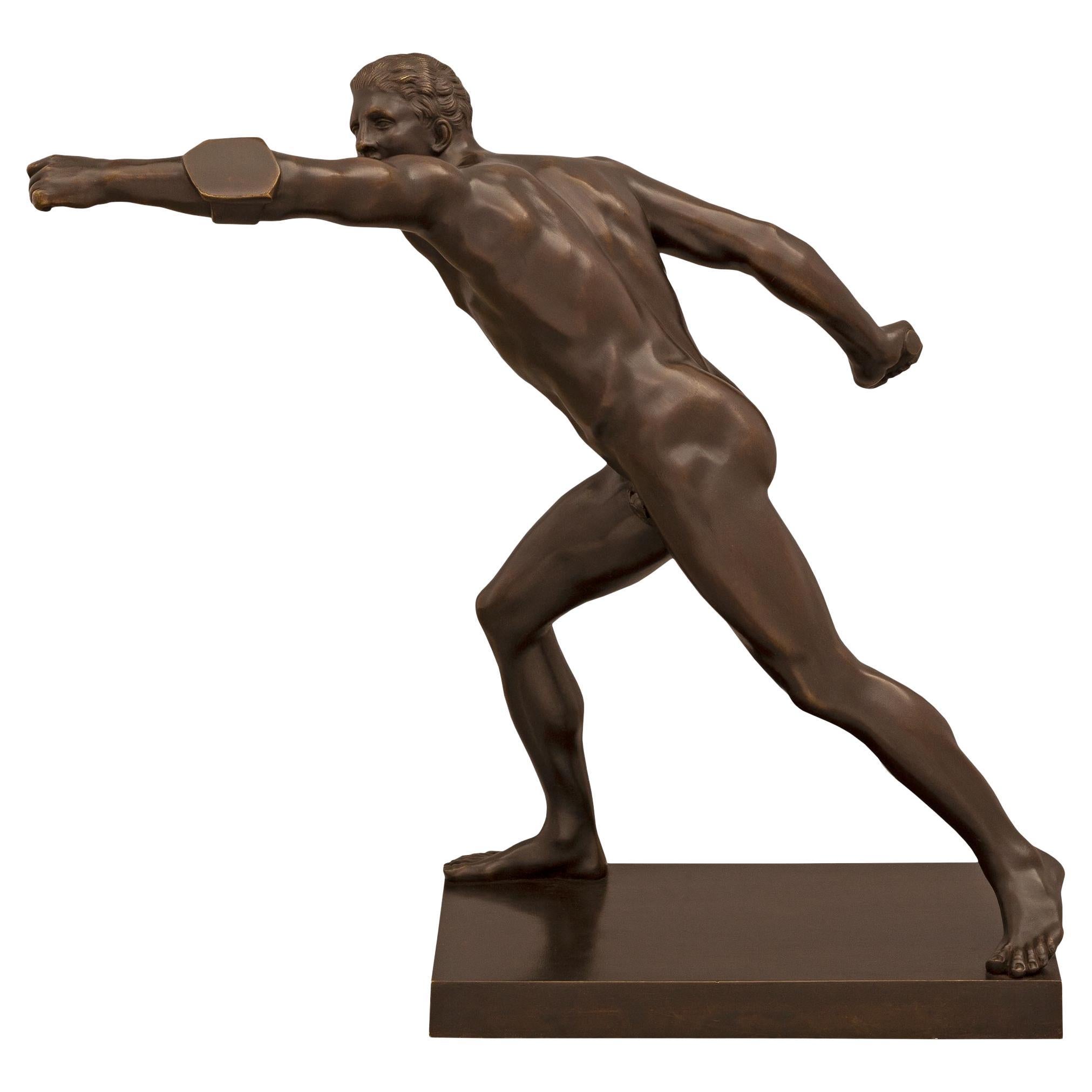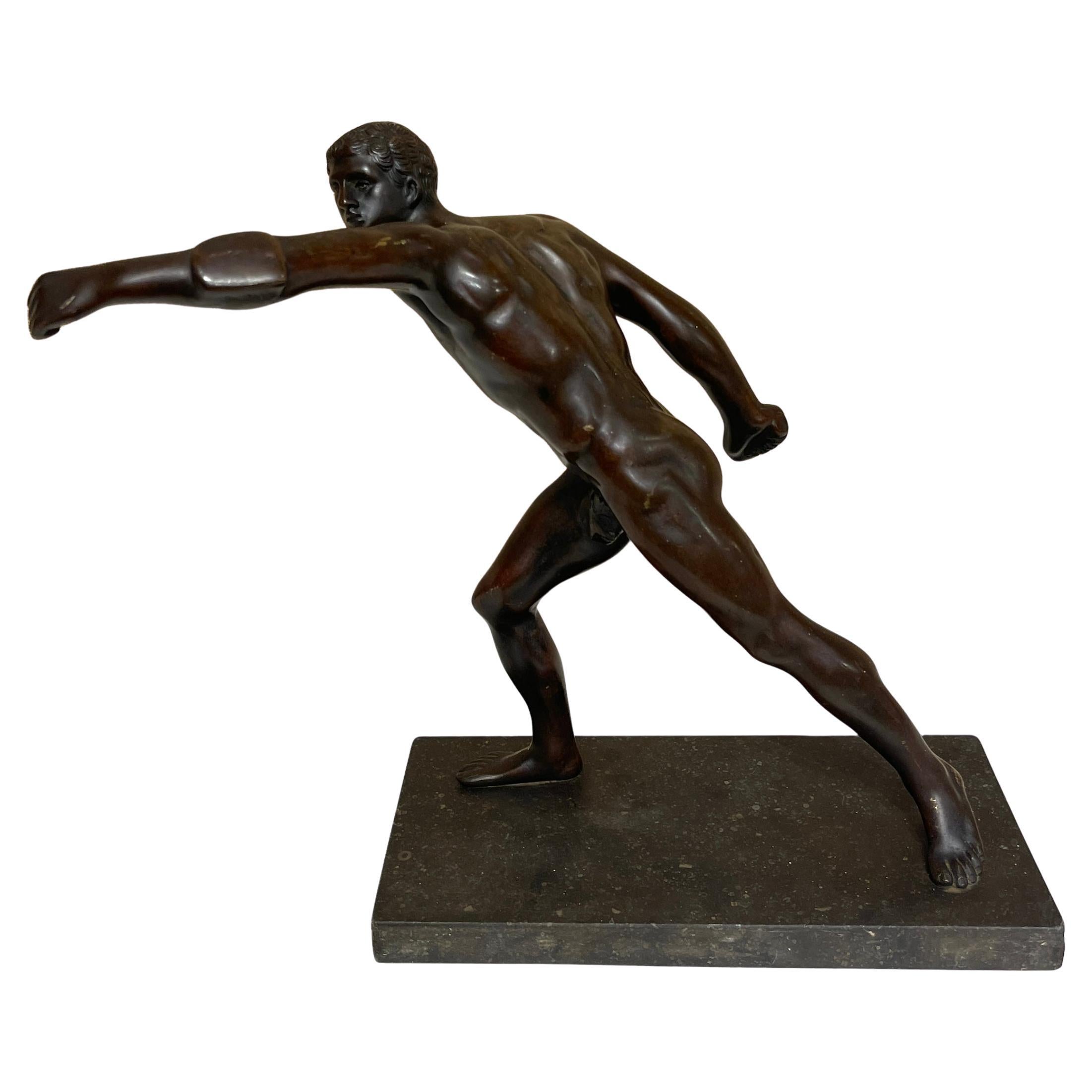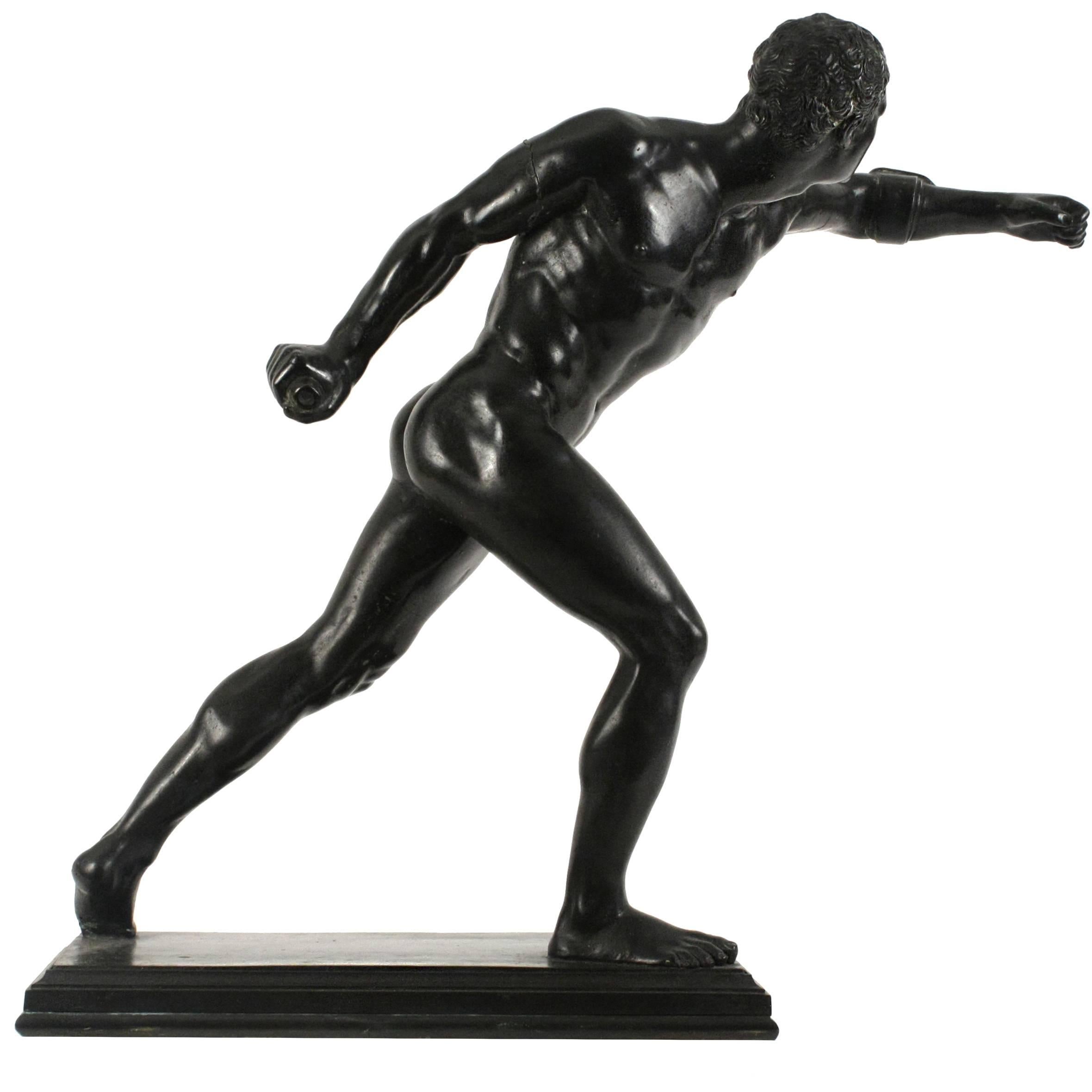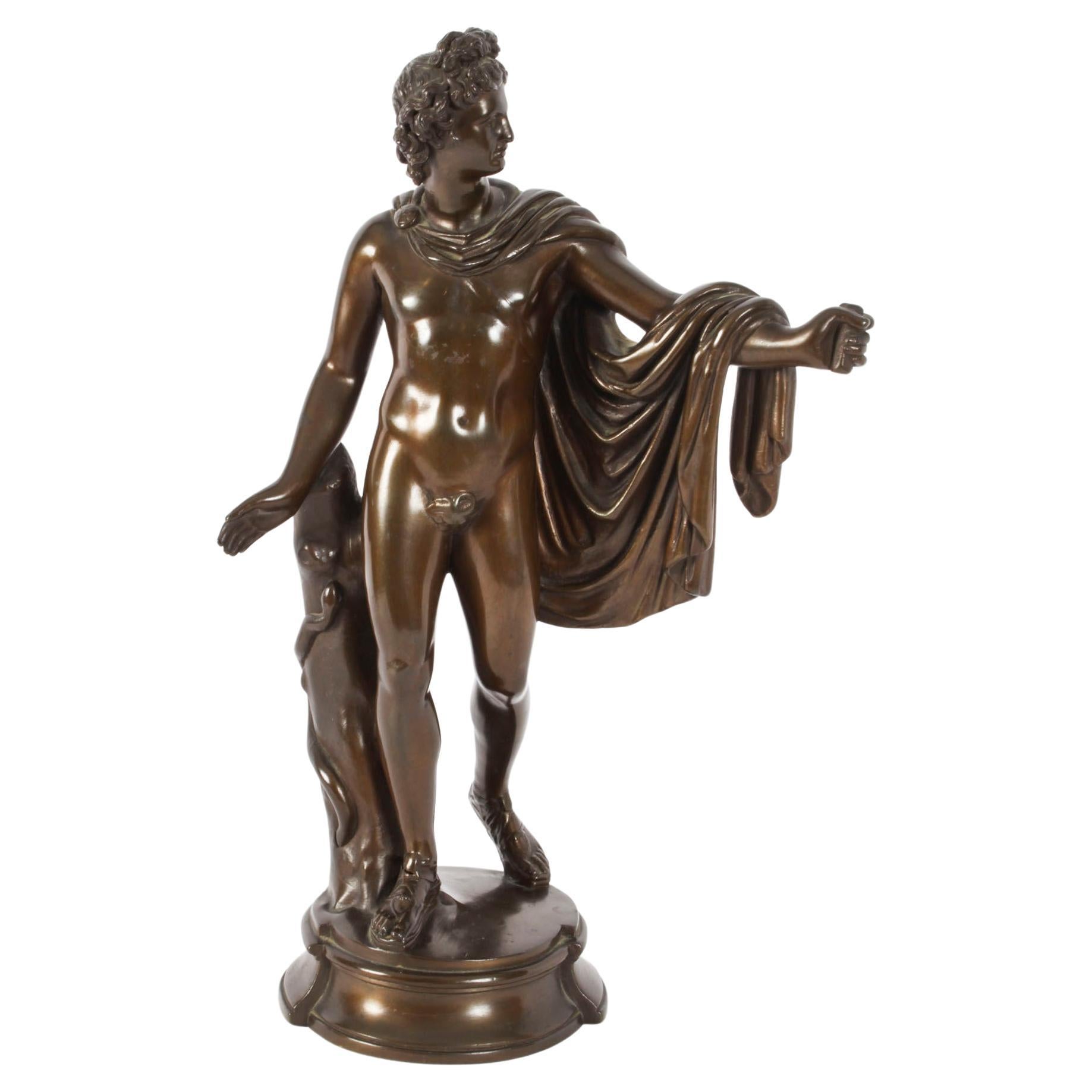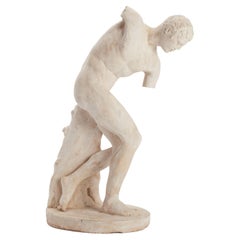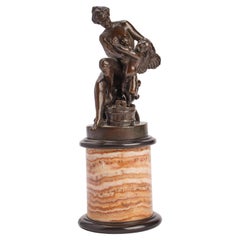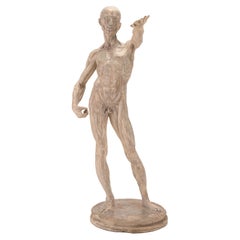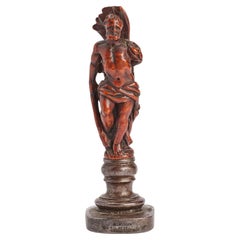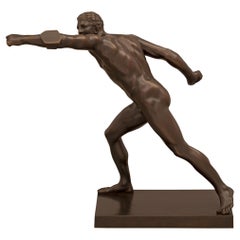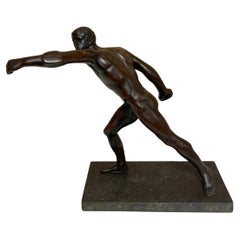Items Similar to A neoclassic Grand Tour bronze depicting a warrior, Rome 1840.
Video Loading
Want more images or videos?
Request additional images or videos from the seller
1 of 9
A neoclassic Grand Tour bronze depicting a warrior, Rome 1840.
$3,557.36
£2,643.40
€3,000
CA$4,923.59
A$5,482.81
CHF 2,862.70
MX$66,434.44
NOK 36,101.70
SEK 34,064.80
DKK 22,842.54
About the Item
Extremely refined neoclassical Grand Tour bronze sculpture, lost wax process, depicting a warrior Protesilao. Oval base made out of yellow marble from Siena. Rome, Italy 1st half od 19th century.
- Dimensions:Height: 10.5 in (26.67 cm)Width: 6.75 in (17.15 cm)Depth: 4.5 in (11.43 cm)
- Materials and Techniques:
- Place of Origin:
- Period:
- Date of Manufacture:1840
- Condition:Wear consistent with age and use.
- Seller Location:Milan, IT
- Reference Number:1stDibs: LU917141580442
About the Seller
5.0
Vetted Professional Seller
Every seller passes strict standards for authenticity and reliability
Established in 1991
1stDibs seller since 2011
249 sales on 1stDibs
Typical response time: 2 hours
- ShippingRetrieving quote...Shipping from: Milan, Italy
- Return Policy
Authenticity Guarantee
In the unlikely event there’s an issue with an item’s authenticity, contact us within 1 year for a full refund. DetailsMoney-Back Guarantee
If your item is not as described, is damaged in transit, or does not arrive, contact us within 7 days for a full refund. Details24-Hour Cancellation
You have a 24-hour grace period in which to reconsider your purchase, with no questions asked.Vetted Professional Sellers
Our world-class sellers must adhere to strict standards for service and quality, maintaining the integrity of our listings.Price-Match Guarantee
If you find that a seller listed the same item for a lower price elsewhere, we’ll match it.Trusted Global Delivery
Our best-in-class carrier network provides specialized shipping options worldwide, including custom delivery.More From This Seller
View AllAn academic cast of a sculpture depicting a discus thrower, Italy 1890.
Located in Milan, IT
Over the plaster round base is set the cast of a sculpture of a Discus thrower. Cast for drawing teaching in Academy. Italy 1890 ca.
Category
Antique Late 19th Century Italian Figurative Sculptures
Materials
Plaster
Grand Tour Bronze Depicting Venus and Cupid, Rome, 1890
Located in Milan, IT
Grand Tour Bronze sculture depicting Venus and Cupid, reluctant to take a bath. Placed over a cylindric pink marble and black Belgium marble plint base...
Category
Antique Late 19th Century Italian Figurative Sculptures
Materials
Marble, Bronze
Antomical Skinned, Italy, 1880
Located in Milan, IT
An anatomical sculpture in plaster, depicting a skinned man standing on a round base in a classic raised arm pose. use for an anatomical study. It...
Category
Antique Late 19th Century Italian Figurative Sculptures
Materials
Plaster
Boxwood carved seal depicting Hercules, Italy 18th century.
Located in Milan, IT
A Grand Tour carved boxwood seal depicting Hercules with a square iron matrix. Italy mid 18th century.
Category
Antique Mid-18th Century Italian Figurative Sculptures
Materials
Iron
A neoclassical Grand Tour lava seal, Italy 1840.
Located in Milan, IT
A neoclassical Grand Tour seal, carved and engraved in red lava, depicting the head of an Italian figure with a cap, wreaths of laurel and acanthus lea...
Category
Antique Mid-19th Century Italian Figurative Sculptures
Materials
Lava
Sculpture clock depicting a native American, France 1890.
Located in Milan, IT
A clock with "Parisian" movement, with pendulum and half hour chime, white enamel dial with garlands of roses, inserted in a bronze patinated white (antimony) metal sculpture, with g...
Category
Antique Late 19th Century French Figurative Sculptures
Materials
Metal, Bronze
You May Also Like
Italian 19th Century Grand Tour Period Bronze Statue of the Borghese Gladiator
Located in West Palm Beach, FL
An impressive and high quality Italian 19th century Grand Tour Period patinated bronze statue of the Borghese Gladiator. The statue is raised by a rectangular base where the handsome...
Category
Antique 19th Century Italian Grand Tour Figurative Sculptures
Materials
Bronze
19th C. Italian Grand Tour Bronze of the Gladiator, After the Roman Antique
Located in West Palm Beach, FL
19th-century Italian Grand Tour Bronze of the Gladiator, After the Roman Antique
Attributed to the Naples Foundry, late 19th century
This fine 19th-century Italian Grand Tour bronze...
Category
Antique 19th Century Italian Grand Tour Figurative Sculptures
Materials
Marble, Bronze
$1,480 Sale Price
20% Off
Italian Grand Tour Bronze Figure of an Athlete
Located in New York, NY
Italian Grand Tour bronze figure of an athlete, Italy, 19th century.
Measures: H 11.5 in.
Category
Antique 19th Century Italian Figurative Sculptures
Materials
Bronze
Large 19th Century Bronze Sculpture of Borghese Gladiator
Located in New York, NY
Borghese Gladiator, after the antique
large patinated bronze sculpture
Italy, 19th Century
H 20 in. (50.8 cm)
Original marble sculpture was found in the early 1600's in the Anzio so...
Category
Antique 19th Century European Figurative Sculptures
Materials
Bronze
19th Century French Borghese Gladiator Bronze of Large Scale
Located in Benington, Herts
A finely cast large scale bronze of the Borghese Gladiator with exceptional patina
French c.1830-50
Due to the particularly fine casting of our piece, it seems likely that it is ...
Category
Antique Mid-19th Century French Figurative Sculptures
Materials
Bronze
Antique Victorian Bronze Sculpture of Greek God Apollo 19th Century
Located in London, GB
This is a truly magnificent antique Victorian patinated bronze sculpture of the famous Greek God Apollo, modelled upon a shaped circular socle, inscribed monogram 'NF' and numbered 2...
Category
Antique 1860s English Victorian Figurative Sculptures
Materials
Bronze
More Ways To Browse
Metal Mannequin
Olympus Furniture
Roman Marble Fragment
Tole Sculpture
African Beaded Sculpture
Bread Sculpture
Bronze Breast Sculpture
Goddess Minerva
Goebel Germany
Green Onyx Stand
Hand Carved Wooden Figurines
Winged Bronze Statue
African Plaster
Art Deco Sculpture Chrome
Austrian Erotic Bronze
Bronze Sculpture Of Mercury
French Nude Statue
Greek Armour
